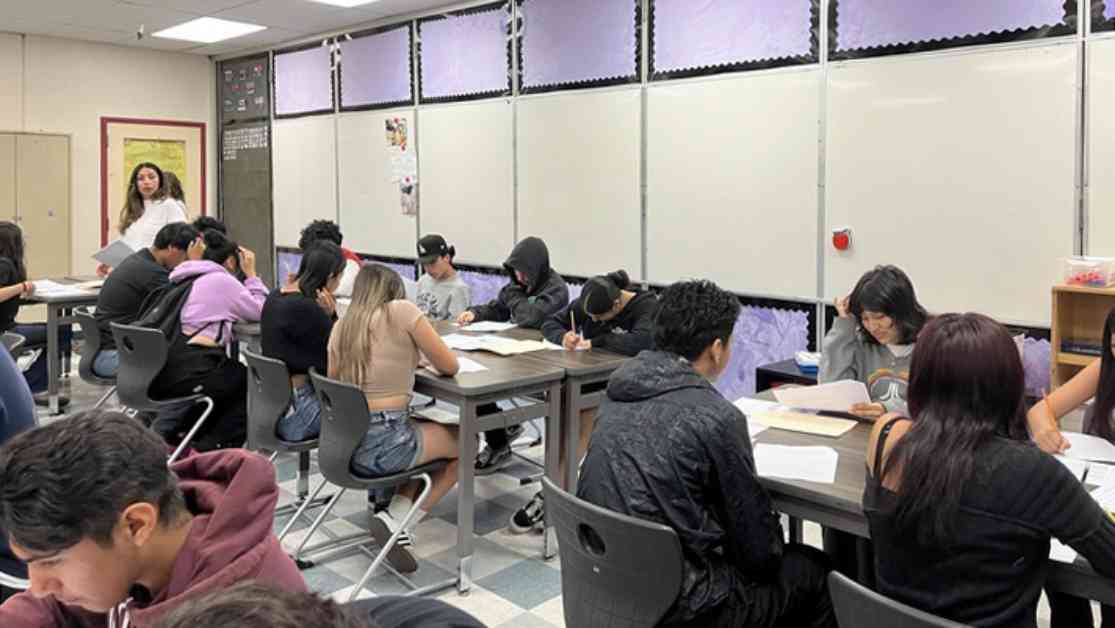Support for equity in LAUSD’s 100 priority schools: Is the program sufficient?
Students at Thomas Jefferson High School in the Los Angeles Unified School District (LAUSD) have a rich history. Established over a century ago, the school is located in Central Avenue, once known as “Little Harlem” during the 1920s and 1930s. Notable graduates of Jefferson High include Ralph Bunche, the first Black Nobel laureate, and Alvin Ailey, the legendary choreographer. However, Jefferson High is now one of the 100 priority schools identified by Superintendent Alberto Carvalho as having high needs in terms of academic performance and attendance rates.
In an effort to promote equity, LAUSD provides priority schools like Jefferson with additional support. These schools are the first to receive resources such as instructional days to recover from pandemic learning losses and pilot LAUSD’s AI personal assistant. While this approach has been praised by veteran teachers and community activists for its focus on equity, there are concerns that being labeled as a priority school can create a stigma affecting administrators, teachers, and students. Many argue that the superintendent’s standardized approach does not address the underlying societal causes of academic struggles.
According to a district spokesperson, LAUSD’s priority schools serve higher percentages of underserved students, including those who are Black, Latino, foster youth, unhoused, and from immigrant backgrounds. However, proponents of other equity programs, such as the Student Equity Needs Index (SENI), feel that their efforts have been sidelined and have not received the same level of support.
The priority schools, primarily located in south and southeast Los Angeles, have struggled with chronic absenteeism and lower academic performance. In the 2022-23 academic year, 38.2% of students at these schools were chronically absent, and only 23% met or exceeded English standards, while 16% met or exceeded math standards. Additionally, nearly 70% of priority school graduates failed to complete their A-G requirements for admission to California’s public university systems.
While LAUSD claims that priority schools have shown improvement, there are concerns about the effectiveness of the support provided. Some educators argue that the standardized approach does not address the root causes of academic challenges faced by students. Factors such as poverty, violence, and community stressors can significantly impact students’ ability to learn and succeed in school.
The Student Equity Needs Index (SENI) is a long-term equity program in LAUSD that categorizes schools based on their needs, considering factors beyond academics, such as gun violence and asthma rates. SENI allocates funding based on a sliding scale, allowing schools to address their most pressing needs. While SENI has shown improvements in student outcomes, there are concerns about unused funds and the need for sustained support.
As LAUSD continues to prioritize equity, there is a delicate relationship between the 100 priority schools and the SENI initiative. Advocates appreciate the district’s commitment to equity but feel that SENI has been overshadowed by the emergence of the priority schools list. Transparency and collaboration between the district and advocates are key to ensuring that high-needs schools receive the support they need to succeed.
Overall, the question remains: is the support provided to LAUSD’s 100 priority schools sufficient to address the complex challenges faced by students in these communities? As the district continues to prioritize equity, it must consider the unique needs of each school and work collaboratively with stakeholders to ensure that all students have access to quality education and support.
